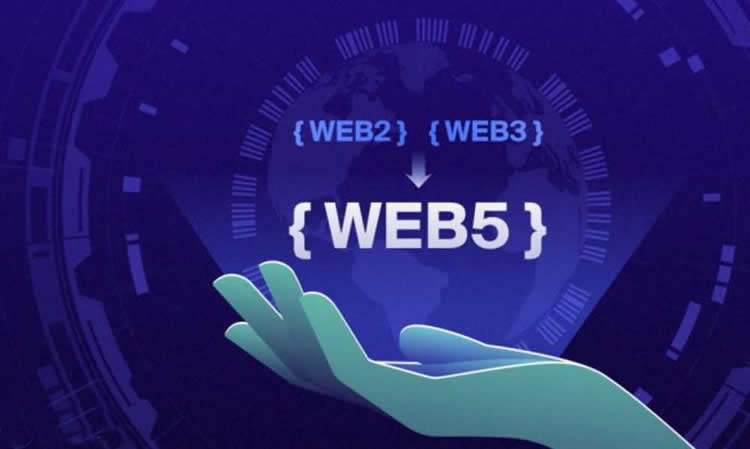Has the definition and era of Web5.0 arrived?
- WBOYWBOYWBOYWBOYWBOYWBOYWBOYWBOYWBOYWBOYWBOYWBOYWBforward
- 2024-01-24 08:03:171207browse
Bitcoin venture capital firm TBD has previously announced a surprising new proposal to begin building the next evolution of the Internet: Web5, also known as Web5.0. This proposal surprised many people, exclaiming, "We haven't understood Web 3.0 yet, here comes Web 5.0!" What does this Web 5.0 mean? Web5 is a decentralized version of the Internet where users can store their personal information and revoke access at will. It is an evolution of Web3.0 and aims to create a unique set of tools based on Bitcoin to change what we know today. financial system. The editor below will give you a simple explanation of Web5.0.

What does Web5.0 mean?
Web5 is a decentralized, peer-to-peer network vision built on the second layer of the Bitcoin blockchain. It is designed to provide a way for users to autonomously store and manage access to personal information. Unlike traditional centralized networks, Web5 relies entirely on decentralized network nodes to operate and is separated from any underlying blockchain network. By leveraging the Bitcoin blockchain infrastructure, Web5 provides users with a more secure and private way to manage data. Users can choose to store and share personal information without relying on third-party intermediaries or institutions. The nature of this peer-to-peer system gives users greater control over their data and reduces the risk of data leakage and misuse. The emergence of Web5 brings more privacy and autonomy to users, and provides new possibilities for building a more secure and trustworthy network environment.
Web5’s mission is to build an online system that is free from the influence of big tech companies, protects personal data and restores ownership of digital identities to individual users. It will combine the user-friendly convenience of Web2.0 and the decentralized design philosophy of Web3 to achieve this goal. By creating a bias-free and transparent platform, Web5 strives to ensure that users have full control over their data and that its privacy and security are protected. This will provide individual users with greater autonomy, reduce their sense of dependence in the digital world, and provide them with more choice and control.
Unlike Web3, which stores data on public network solutions, Web5 allows users to fully control their data through decentralized Web nodes. Unlike Web3, the Web5 framework does not use smart contracts or tokens to operate, providing a more streamlined way to store and control data.
Michael Pierce, CEO of Not Common, said that the fundamental purpose of Web5 is to give users control of their own data. Not Common is a cross-chain Web3 platform focused on providing non-fungible token (NFT) collectors with security threat alerts against their works. The essence of this concept is to democratize the network by eliminating the gatekeepers of centralized technology. This means users can better protect their digital assets and ensure their security and privacy.
Has the era of Web5.0 arrived?
According to current data analysis, it is not yet the Web5.0 era. Most people generally believe that it will take several years for Web 5.0 to be fully functional. According to Dorsey and his team’s TBD roadmap, they plan to release a public test platform by the fourth quarter of 2023.
"Kopteff said that since at least part of it is open source, if you are tech-savvy, you can check it out on TBD's website. However, for the general public, this may be difficult."
As with any startup, the success of Web5 will largely depend on the number of companies, organizations, and the public that develop the Bitcoin-embedded internet layer over the next few years. Koptev believes there probably won't be any major breakthroughs in the next year or so, especially once the hype starts to fade.
Web5 utilizes the Bitcoin Lightning Network, a layer 2 payment protocol that runs on the main Bitcoin blockchain. Placing Web5 on the protocol enables fast network functionality that is independent of tokens, transaction “gas” fees, trusted validators, or other consensus mechanisms—all in an effort to create a peer-to-peer infrastructure of personal servers and reduce centralized governance.
In a way, the concept of decentralized networks is a fundamental return to Y2K-era technology. BitTorrent, another internet protocol, is a working example of this concept. BitTorrent demonstrated a successful, open source, peer-to-peer system and its file sharing service, much like the original Napster did for music, albeit illegally.
The above is the detailed content of Has the definition and era of Web5.0 arrived?. For more information, please follow other related articles on the PHP Chinese website!

